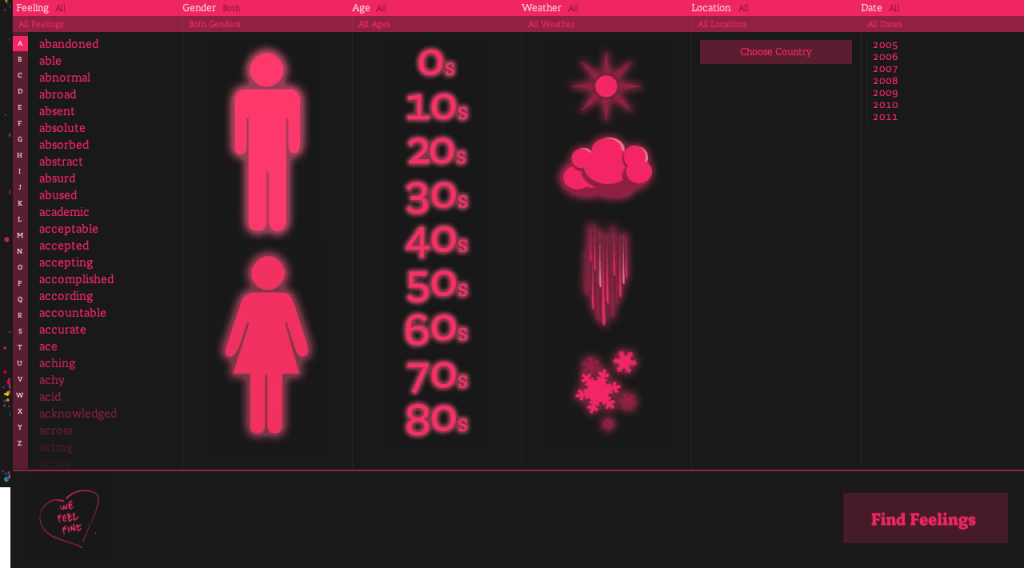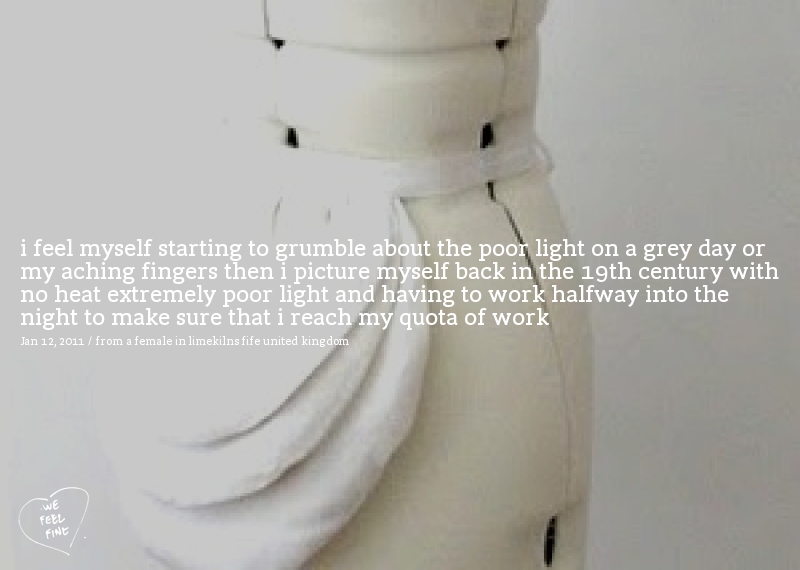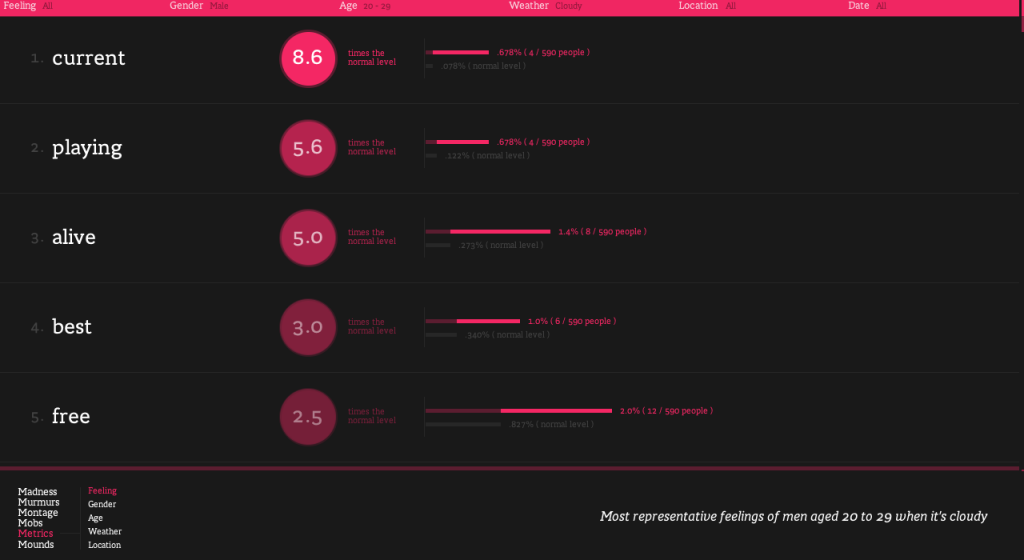Jonathan Harris and Sep Kamvar are behind this “exploration of human emotion, in six movements”… one of those interactive websites which intelligently track & measure our web behavior (in this case, moods & feelings) to present them in a smart way….
We feel fine is quite an oldie project as it started back in 2005 when it started harvesting human feelings from a large number of weblogs. Every few minutes, the system searches the world’s newly posted blog entries for occurrences of the phrases “I feel” and “I am feeling”. When it finds such a phrase, it records the full sentence, up to the period, and identifies the “feeling” expressed in that sentence (e.g. sad, happy, depressed, etc.). Because blogs are structured in largely standard ways, the age, gender, and geographical location of the author can often be extracted and saved along with the sentence, as can the local weather conditions at the time the sentence was written. All of this information is saved.

The result after 5 years? This beautiful database of several million human feelings, increasing by 15,000 – 20,000 new feelings per day. Using a series of playful interfaces, the feelings can be searched and sorted across a number of demographic slices, offering responses to specific questions like: do Europeans feel sad more often than Americans? Do women feel fat more often than men? Does rainy weather affect how we feel? What are the most representative feelings of female New Yorkers in their 20s? What do people feel right now in Baghdad? What were people feeling on Valentine’s Day? Which are the happiest cities in the world? The saddest? And so on.
So for example men in their 20s who’ve got a cloudy day seem to feel more like “alive” but less free or “blessed” than those in their 30s.
How they’re splitting up all the info? They paint these pictures in six formal movements titled: Madness, Murmurs, Montage, Mobs, Metrics, and Mounds.


















